
The 2025 Fall Technical Meeting (FTM) will be on October 22–24, 2025 and co-located with Motion + Power Technology Expo.
- Registration is now open and will take place through the Motion + Power Technology Expo webpage.
- Please note that this year’s FTM will take place Wednesday through Friday (as opposed to the previous Monday through Wednesday schedule)
Technology is fundamentally changing the way manufacturing is done. The gear industry is faced with emerging trends and innovation that is challenging engineers to stay in course with cutting-edge technology to keep design, quality, materials and analysis efficient. It is imperative that researchers and gear engineers communicate ideas with fellow experts in the field. AGMA’s annual Fall Technical Meeting (FTM) is the perfect forum in which to share research and to disperse knowledge for the benefit of the industry at a global level.
Each year, authors selected by AGMA write technical papers on topics relevant to the gear industry. These may include subject matter related to: design and analysis; manufacturing and quality; materials, metallurgy, and heat treatment; operation, maintenance, and efficiency; and gear failure. The papers then go through a double-blind peer review process in order to ensure the efficacy of the research. The authors then present the results of their work at the FTM to an audience of knowledgeable international engineering professionals. During a Q&A period at the end of each session, authors and attendees are able to exchange their ideas.
Note:
- Scheduled times are subject to change.
- Full Registration includes PDFs of all 2025 FTM papers.
- Single-session registrants can purchase tickets separately for other events.
All Fall Technical Meeting questions should be sent to FTM@agma.org.
Before registering for the Fall Technical Meeting, you will be asked to create an AGMA account in order to sign up if you do not already have an AGMA profile. After clicking the Register button above, click “Create a new account” to set up your profile or log in using your existing account. If you have any questions about your account, please contact schuh@agma.org.
Student discounts available upon request.
Note that pricing below reflects onsite registration prices. A detailed pricing list with discounts can be found on the MPT Expo registration page.
Full FTM Pass Registration includes the awards luncheon and Thursday night’s FTM networking reception.
Full Registration
Member
$1,450
Nonmember
$1,850
Single-Session Registration
Member
$450
Nonmember
$550
Hotel Information
By booking in the AGMA room block, you receive a variety of benefits, including guaranteed accommodations, better networking opportunities with your peers, special guest status at the host hotel, and flexible cancellation terms if your plans change. AGMA advises against booking hotel rooms through third party booking sites such as Hotels.com, as there may be hidden fees, limited flexibility, and fewer rewards. AGMA does not work with a housing company and only AGMA Staff will reach out to you with details regarding the room block; any other companies that reach out to you regarding room reservations may be fraudulent and are not endorsed by AGMA. If you need assistance with your accommodations or have issues with the booking link provided by AGMA, please contact events@agma.org.
- Detroit Marriott at Renaissance Center
Renaissance Center, 400 Renaissance Drive
Detroit, MI 48243
313-568-8000
Daily Room Rate: $252
Cut-Off Date: Wednesday, October 6, 2025
An unforgettable experience awaits at Detroit Marriott at the Renaissance Center. Situated downtown along the award-winning International Riverwalk, near the Huntington Place, Ford Field, Little Caesars Arena, Comerica Park and other attractions. The hotel welcomes you to Detroit, Michigan with contemporary design, a newly renovated modern lobby and Fuell restaurant, and guest rooms that offer fabulous views of the city, floor-to-ceiling windows, comfortable bedding, and high-speed Wi-Fi.
Schedule
- Wednesday, October 22
- Thursday, October 23
- Friday, October 24

10:00am – 1:00pm
Session 1: Design and Rating
Room 410A
Our kickoff session is planned to be a great one! We have new technology for bevel gear manufacturing relating to profile shift as well as a deep dive into sub-case fatigue fracture for automotive straight tooth bevel gears. Crown gears will be examined for their load capacity compared to bevel gearing. Not all of this session is on bevel gearing though! We will hear about planetary gear micro-geometry design factoring in carrier deformation and a unique gear repair using additive manufacturing methods. The session will wrap up with a special presentation by the convenor of ISO Technical Committee 60, working group 6, which is responsible for all ISO gear rating standards, on the scope and current work being performed by that international group of experts.
Independent Pinion and Gear Profile Shift for Bevel Gears
Hermann Stadtfeld, Gleason Corporation
In bevel and hypoid gears, as well as straight bevel gears, the pinion profile shift coefficient X1 and the gear profile shift coefficient X2 have the same absolute amount but opposite signs. In bevel gears, this prevents a shaft angle change. This means that a positive profile shift in both members of a bevel gearset would change the shaft angle by (X1 + X2) * mn / Mean Cone Distance. The new developed independent profile shift allows a positive profile shift in pinion and gear without a change of the shaft angle, yet having all the advantages like elimination of undercut, increased contact ratio, and improved NVH as well as stronger tooth profiles, especially in case near miter ratios with a low number of teeth.
Gear Scuffing Analysis Comparison Study
Zhiyuan Yu, Drive System Design
This research focuses on addressing gear scuffing in electric vehicle (EV) transmission systems. Gear scuffing, caused by metal-to-metal contact under high load and speed, poses a significant challenge to EV gearbox durability. To tackle this, the study utilizes advanced software tools: Masta and Windows LDP. Masta uses ISO 6336 and empirical correlations, while Windows LDP employs an elastohydrodynamic lubrication (EHL) model for a physics-based approach. Despite improvements in scuffing temperature predictions, discrepancies exist between the tools due to variations in surface roughness, torque load, speed, and lubrication. The research proposes a dual approach, combining both tools and correlating results with physical testing on custom-designed rigs, enhancing EV transmission reliability and accelerating gearbox development.
Design and Load Capacity of Crown Gears in Comparison to Bevel Gears
Joachim Thomas, ZG Hypoid GmbH
The demand for more efficient gearboxes makes new types of gear sets increasingly interesting in order to realize such transmissions. The crown gear (also known as face gear) is not actually a new type of gear, but it has led a rather niche existence in the past. New manufacturing methods and new design and calculation options are bringing the crown gear back into focus. Today, crown gears are designed with the help of modern flank generators. With the help of the tooth model complex tooth contact analysis under load (LTCA) now can be carried out in the same way as for bevel gears. Two examples are used to show possible applications of crown gears in comparison with similar bevel gears.
TIFF Identification and Resolution of Automotive Straight-Toothed Bevel Gears
Caleb Gurd, Eaton Corporation
This paper introduces a practical framework for identifying and mitigating Tooth Interior Fatigue Fracture (TIFF) in straight-toothed, net-forged bevel gears used in automotive differentials. As drivetrain systems evolve to deliver higher torque in compact designs, subsurface failures like TIFF pose increasing challenges. Unlike well-understood surface failures, TIFF demands deeper insight into material behavior and internal stress. Drawing from real-world case studies, industry practices, and academic research, the paper evaluates diagnostic and preventative methods including visual inspection, MPI, SEM, microgeometry optimization, and heat treatment. It offers actionable strategies for both newcomers and seasoned engineers, aiming to enhance drivetrain reliability and gear performance. This work supports the ongoing advancement of high-performance gear systems by addressing complex, often-overlooked failure modes.
Local Damage Based Micro Geometry Design Method for Planetary Gears Considering Axis Misalignments and Load Deformations
Simon Nohl, Laboratory for Machine Tools and Production Engineering (WZL) of RWTH Aachen University
CAE-based micro geometry design of cylindrical gears enables to optimize the operational behavior of gearboxes and enhances the lifetime due to the reduction of root stress and flank pressure.In this paper, a tooth contact analysis software for planetary gears with a numerical contact algorithm is extended to calculate the damage accumulation both concerning pitting durability and tooth root bending fatigue strength. This approach is further used to design the micro geometry in lead direction based on the safety factors on flank and root as a design target for a load collective of a wind turbine gear stage. The method is then compared to a particle swarm optimization approach with higher calculation time yet being able to optimize the static transmission error additionally.
Special Presentation: Activities and Responsibilities of ISO/TC 60/SC 2/WG 6
Karsten Stahl, Gear Research Center (FZG), Technical University of Munich (TUM)
International standards are essential for ensuring consistent, reliable, and high-quality engineering practices worldwide—and they serve as a common technical language. For cylindrical steel gears, typical damage modes and their corresponding safety factors are addressed in the ISO 6336 series. This series is developed and maintained by ISO/TC 60/SC 2/WG 6 “Gear Calculations,” active since 1994 with the goal of making state-of-the-art calculation methods widely accessible. Currently, the group is working on upgrading several key Technical Specifications to full International Standards, including ISO/TS 6336-4 (tooth flank fracture), ISO/TS 6336-20 and -21 (scuffing), and ISO/TS 6336-22 (micropitting). This presentation will provide an update on the standardization process and highlight recent technical developments of particular relevance to gear researchers, developers, and practitioners worldwide.
Repair and Fabrication of Gears Using Laser Directed Energy Deposition
Diego Montoya, Ikergune, INZU Group
Additive manufacturing has been positioned in the manufacturing industry due to its capabilities to fabricate complex parts. The use of Laser Directed Energy Deposition (LDED) in repairs reduces considerably the lead times, and the gear industry could benefit from this advantage. However, there is a lack of research and data on the performance of gears repaired by LDED. In this work, we chose the martensitic tool steel Dievar to repair the teeth of a gear, damaged during the assembly process of a machine for aluminum parts production. We also investigate the bending fatigue response, and the corresponding S-N curve of gear teeth manufactured with Dievar. The results of the experiments demonstrate that LDED has large potential for being widely adopted in gear repair applications.
1:20pm – 2:20pm
Awards Luncheon
(included in full registration)
Room 410B
2:30pm – 5:30pm
Session 2: Electric Vehicles and Emerging Technology
Room 410A
A new session for this year! As the session title indicates, the papers presented here will cover a lot of emerging topics such as plastic gear performance, plastic gear coatings and their performance, and additive manufacturing gear designs for NVH characteristics. We will also hear about optimization techniques and performance goals for EV drivetrain design. Normally incorporated by a factor in gear rating formulas, impact loading in automotive applications will be discussed in depth. Quite a way to round out our first day.
Nanocomposite Coatings for Thermoplastic Gears
Peter Schmidt, United Protective Technologies, LLC, UNCC PORTAL
Borut Černe, RD Motion, d.o.o.
Gears formed with thermoplastic materials have made significant strides in strength over the last decade. With the goal of reducing wear and potentially improving fatigue durability, gears manufactured from reinforced Polyetheretherketone (PEEK) were examined, analyzed, and coated using Plasma Enhanced Chemical Vapor Deposition (PECVD). A thin film coating system was applied after surface finish improvement to the gears under evaluation. Results of standard tribological testing (ASTM G99) and standard thin film coating testing (ISO 26423, ISO 20502, VDI 3198), documenting performance on the PEEK substrate are reported. Coated gears were then tested in accordance with VDI 2736 in oil lubricated conditions for comparison with previously obtained results from tests on the same material in uncoated conditions.
Performance-Driven Design of Multi-Stage Gear Transmissions for E-Drive Systems
Claudio Autore, Ferrari S.p.A.
This work presents a multi-objective optimization method for multistage spur gear transmission design in e-drive systems, focusing on compactness, efficiency, and weight. The approach incorporates manufacturing and geometric constraints into the optimization process, ensuring designs are aligned with production requirements. The framework supports both simple and compound gear trains, enabling exploration of an extensive design space characterized by macro-geometry and tooth profile variables. Optimization is executed using a genetic algorithm, complemented by KISSsoft and established load-independent models that estimate power losses under ISO safety criteria. When applied to a two-stage gearbox, the results indicate that the compound configuration offers enhanced design flexibility and produces a denser Pareto front. This method provides a systematic alternative to trial-and-error approaches, aligning mathematical optimization with industry best practices.
Investigations on the Wear Behavior of Plastic Crossed Helical Gears
Martin Weber, Gear Research Center (FZG), Technical University of Munich (TUM)
Compact electric drives are increasingly in demand. Crossed helical gears are well-suited due to their high transmission ratio and freely selectable axis crossing angle. Using plastic materials improves NVH performance, efficiency, emergency running capabilities, and enables cost-effective, compact drives. Research on plastic crossed helical gears is limited; existing wear calculation and testing methods are mainly type-specific and based on steel/plastic pairings, thus only partially applicable. Methods for metal gears neglect plastics’ complex, temperature-sensitive properties. Weight-based wear measurements are unsuitable due to material-lubricant-air interactions. This paper presents a novel in-situ method for evaluating wear in plastic crossed helical gears using angular difference measurements. Its applicability is demonstrated through experiments on a PEEK/PEEK pairing. Results show strong correlation with common techniques while significantly reducing measurement effort.
Impact Load Considerations in Automotive Gear Design
Carlos Wink, Eaton Corporation
Uneven gear shifting, particularly with manual clutches, is a significant source of transient loading in automotive drivetrains. If not accounted for during gear design, transient loads may influence transmission performance under certain operating conditions. Gear rating standards, recommend accounting for all potential torsional vibrations and impact loads in the calculations. An overload or application factor is used to account for all the loads exceeding the nominal load on the gear. These standards allow gear engineers to define the overload factor based on their experience, acknowledging the wide and complex nature of load variations. This paper presents an approach to incorporating the effect of drivetrain shocks in transmission gear rating and includes a case study identifying impact loads from gear shifting events as a significant factor.
High-Damping Lightweight Design for Laser Powder Bed Fusion 20MnCr5 Gears
Bruno Henrique Lima, Aeronautics Institute of Technology
Main Author: Matheus Fernandes Vieira, Aeronautics Institute of Technology
The growth of the electric vehicle market is reshaping the gear industry, demanding improved Noise, Vibration, and Harshness (NVH) performance. Laser Powder Bed Fusion (L-PBF) enables complex geometries with suitable mechanical properties for gears. This study presents a method to explore the L-PBF’s design freedom and topology optimization to reduce pinion gear mass and enhance damping behavior through polymer infiltration. The approach calibrates stiffness changes to improve NVH while incorporating transmission error simulations to avoid resonance. Results show a 22% weight reduction and significantly improved damping. The adjusted stiffness also modified the transmission error pattern, avoiding critical frequencies. This method supports the development of advanced, lightweight, and sustainable gear systems aligned with electromobility demands.
Interaction of Gear and Bearing Simulation for Planetary Gear Stage Optimization
Michael Otto, Gear Research Center (FZG), Technical University of Munich (TUM)
Achieving compact gearbox design requires high-end simulation by local tooth contact analysis. Recent developments show a trend towards more complex planetary gear designs to further increase power density. This can be observed in the field of e-mobility or e-micromobility. For high ratio and small housing dimensions not only classical minus planetary gear stages are designed but also designs with stepped planets are discussed. In this paper, the authors present a simulation approach for such designs based on the algorithms implemented in the software package RIKOR. The influence of the level of detail in the simulation of gear mesh on the bearing contact conditions and vice versa is documented in theory and by an example gearbox design.
6:00pm – 9:00pm
Wednesday Social Networking Event – The Materials Fusion Experience
Additional Ticket Purchase Required
Join us for The Materials Fusion Experience, an exclusive social networking event, offering a dynamic and immersive environment for professionals to connect, collaborate, and explore the city’s vibrant history and industry. This event seamlessly blends the city’s cultural roots with modern innovation, creating a multifaceted experience designed to inspire, engage, and foster meaningful connections.
Don’t miss this opportunity to engage with thought leaders, expand your professional network, and immerse yourself in Detroit’s unique blend of history, culture, and industry. Whether you’re looking to collaborate, discover new ideas, or simply enjoy. The event will take place at Waterview Loft.
Who Should Attend – All those attending or exhibiting at Motion + Power Technology Expo, the Heat Treat Conference & Exposition, or IMAT events.

8:00am – 10:00am
What’s Brewing in Workforce and Advocacy: Breakfast and Panel
Room 410B
Additional Ticket Required
Join us for a series of short presentations from a panel of experts as they explore the latest innovations in aerospace. This session will focus on emerging topics, including new plane designs, advancements in eVTOLs (electric vertical take-off and landing), and the future of air mobility. Gain insights into how these innovations are shaping the aerospace and defense industries, from cutting-edge technologies to economic implications, and the impacts to the power transmission industry.
10:00am – 1:00pm
Session 3: Manufacturing and Inspection
Room 410A
Where the part goes from concept to reality, Manufacturing and Inspection is always a topic with continuous innovation. We will hear about optical inspection techniques, using acceleration data to monitor tool wear, and new developments in hard gear skiving. Microstructure impacts on residual stress relaxation will be investigated in one of the papers in this session. In another, surface geometry characterization will help evaluate contact fatigue damage potential.
Areal Surface Characterization of Involute Gears With Microgeometry Corrections and Contact Fatigue Damage for Tooth Contact Analysis
Tom Reavie, Newcastle University
Characterizing the surface geometry of involute gears is crucial for many high-performance applications. Traditional measurements are well-defined by international standards however guidelines for flank surface measurement are not available. The UK’s National Gear Metrology Laboratory, have recently developed a method which evaluates surface parameters, including corrections such as tip, root, and end relief, and calculates measurement uncertainty. To demonstrate the method, gears were contact fatigue tested and measured using a Klingenberg P65 gear measurement machine. Contact stress and transmission error were simulated in a tooth contact analysis model. Various surface conditions: no modifications, nominal modifications, as-manufactured surfaces, and subsequently damaged surfaces were analyzed and are discussed. Future work includes quantifying surface run-in effects, coatings, micropitting progression, and other gear performance standards and model validation.
Acceleration Data-Based Analysis of Tool Wear in Gear Hobbing
Steffen Hendricks, Manufacturing Technology Institute (MTI) of RWTH Aachen University
Gear hobbing is a commonly used soft machining process in gear production due to its high productivity. Monitoring tool wear and workpiece quality is essential for cost-effective manufacturing. Tool Condition Monitoring (TCM) offers a structured approach for detecting critical tool wear. This report introduces a TCM method that analyzes individual generating positions during hobbing, using a fly-cutting trial as an analogy trial. This analysis provides deeper process insights and enables wear monitoring of each area of the cutting edge. In generating positions with multiple tool engagements, higher-order characteristic values proved effective for wear detection, while lower-order values were better suited for single engagements. This knowledge allows for improved monitoring and optimization of the hobbing process.
Extraction of Imaged Tooth Contact Patterns by Iterative Least Squares Approach
Tom Abraham, Rochester Institute of Technology
Crowned gears exhibit localized contact forming an area on the tooth surface known as the tooth contact pattern that is indicative of misalignment insensitivity and excited noise, making it a critical design factor for many types of gears. As it is in consideration while designing gear geometry, it is often inspected. In this work, a method of extracting tooth contact patterns is established using only the virtual model of the gear tooth, an image of the gear, and a known calibration fiducial. A reproducible mathematical approach is presented and utilized to identify contact patterns and extract them back to the 3D model. Once there, it can be mapped into the commonly known radial projection and used for manufacturing and assembly corrections.
Residual Stress Evolution and Stability: Assessing Heterogeneity and Relaxation in Gear Operation
Bruno Henrique Lima, Aeronautics Institute of Technology
This study addresses the sensitive aspects of the residual stress heterogeneity and its impact on the relaxation phenomena during the gear’s initial operation. Fatigue tests were performed in which the samples were evaluated with different conditions of number of cycles to observe the residual stress relaxation. This approach enabled the evaluation of the residual stress stability of the samples based on their initial residual stress intensity and heterogeneity. Preliminary results of the surface residual stress relaxation have already provided relevant information. A heightened tendency for relaxation during gear operation due to a higher heterogeneity level was observed. The comprehensive analysis of the residual stress state highlights the potential to optimize the gear manufacturing chain.
Vibration Analysis for Fault Diagnosis of Cycloidal Gearbox Using Wavelet Transform
Sandeep Thube, Sumitomo Drive Technologies
Vibration analysis has been increasing playing an important role in analyzing the behavior of rotary machineries. Traditional digital methods- time and frequency (Fast Fourier Transform) spectrum analysis – are useful to analyze ‘stationary signal’ generating rotary components such as bearings and involute gears. These methods, however, fall short to deduce firm results when it comes to the cycloidal gearing, which is used in a variety of applications in recent days. The frequency spectrum may not be able to clearly distinguish a faulty cycloidal gearbox from a normally operating one. The paper discusses Wavelet transform method to process non-stationary vibration signal to diagnose the health of the cycloidal gearbox component, viz. Cycloidal disc, using multifractal spectrum.
Hard Gear Skiving With High-Performance Tools – An Innovative Technology for Future Drivetrains
Andreas Hilligardt, Reishauer AG
Internal gears with high load capacity and geometric accuracy in a thin-walled design are required for drivetrains with higher power densities, high efficiency and low noise emissions. These requirements can be met by hard fine machined, case-hardened gears. The high hardening distortions of thin-walled components create major challenges for hard fine machining. Reishauer has developed a completely new tool system with a special high-performance cutting material to make the hard finishing of internal gears to high quality economical. The tool system is complemented by the new, highly specialized Reishauer RS 300 machine. This work presents application examples and shows how this innovative technology can be used to machine internal gears in qualities of ISO class 5 and better with tool lives of over 2000 workpieces.
1:00pm – 2:15pm
Lunch on the Show Floor
2:30pm – 5:30pm
Session 4: Efficiency and NVH
Room 410A
Wrap up our second day with some in-depth topics on transmission error, plastic gear NVH considering wear, lubrication, and materials, and powder metal gearing optimization to reduce NVH. Also, presenters will discuss bevel and hypoid gear efficiency and statistical analysis of manufacturing deviations and component damping effects on NVH.
A Novel Prediction of the Transmission Accuracy by Means of the Integrated Position Error Phenomenon for a Gear Pair
Bahadir Karba, Bursa Uludağ University
The foundational studies for this body of work were conducted by Michalec, who identified positional deviation as a composite result of gear inaccuracies. The present study proposes a novel framework for understanding and quantifying the transmission accuracy of gear systems. The development of this framework entailed an integrated evaluation of integrated backlash and integrated transmission error. Conventional methods rely exclusively on empirical approximations or isolated tolerance values. Conversely, the proposed approach introduces the concept of Integrated Position Error as a composite performance indicator derived from the summation of gear and pinion mesh errors. This exhaustive investigation and proposed roadmap, which aims to bridge the gap between geometric tolerances and dynamic performance prediction, resulted in the proposal of a classification metric: the Integrated Transmission Accuracy Number.
Investigating the Effects of Wear, Lubrication and Material Pairing on the NVH Performance of Plastic Gears
Damijan Zorko, RD Motion, d.o.o.
Growing demands for improved user experience necessitate minimizing noise, vibration, and harshness (NVH) in gearbox systems. Polymer gears offer a promising solution, with steel–polymer or polymer–polymer pairings enabling substantial NVH reductions compared to steel gear pairs. However, key factors influencing polymer gear NVH—such as material pairing, wear, and lubrication—remain underexplored. This study systematically investigates six gear material combinations, including a steel–steel reference, to evaluate NVH performance under consistent conditions. Additionally, it examines the effects of progressive wear and grease lubrication. While the benefits of grease and the impact of wear on NVH are generally acknowledged, they have not been rigorously quantified. The results provide new insights to inform material selection and design strategies for NVH-optimized polymer gears.
Application of PM Solutions for Optimization of Transmission Gear Noise in Battery Electric Vehicles
Philipp Kauffmann, Johnson Electric Aachen
The shift to BEVs amplifies transmission gear noise due to high-frequency electric motor vibrations. Powder metallurgy (PM) gears offer unique NVH optimization opportunities through material properties and design flexibility. Johnson Electric proposes an innovative solution using PM materials for noise damping, adjusting gear body designs to disrupt resonance frequencies and reduce noise perception. Case studies demonstrate significant noise reduction. The solution employs AI-driven design optimization, accelerating development and meeting market demands for quieter BEV transmissions.
Efficiency of Bevel and Hypoid Gears – Calculation Approach and Comparison with Experimental Test Results
Lorenz Constien, Gear Research Center (FZG), Technical University of Munich (TUM)
Due to the increasing challenges of climate change and its consequences at the present time, gear engineers are encouraged to design sustainable gears that are both efficient and have a high load-carrying capacity. Currently, for bevel and hypoid gears, only basic calculation methods are available, given in ISO/TS 10300-20:2021 and ISO/TR 14179-1:2001, for load-depending calculating the gear power loss PVZP. This paper presents a newly developed method based on the standard calculation approach of the virtual cylindrical gear given in method B1 of ISO 10300‑1:2023 for calculating the gear power loss PVZP. The calculation method is validated by experimentally determined gear power losses for bevel and hypoid gears using the FZG bevel gear efficiency test rig.
Holistic and Statistical Approach to the Impact of Manufacturing Deviations on the Transmission Error, Structural Vibrations and the Acoustic Behavior of Gearboxes
Dennis Tazir, FVA GmbH
In electric-drive systems, NVH (Noise, Vibration, and Harshness) optimization is crucial due to the absence of masking noise from combustion engines. A key factor is transmission error (TE), significantly influenced by gear manufacturing deviations. Early identification is vital, especially with shorter development cycles. Relying solely on limit values can lead to excessive tolerances and costs. A statistically balanced approach enables efficient development. This paper presents a workflow to assess TE, structural vibration, and acoustics. A gear design tool models tolerances as normal distributions, focusing on the first gear stage. Multibody dynamics simulations evaluate structural responses at critical speeds, while acoustic simulations analyze noise impact. The approach emphasizes optimizing manufacturing tolerances to enhance NVH performance effectively.
A Comparative Study of the Effect of Damping in the Dynamic Analysis of Drivetrains for NVH Performance Evaluation
Adam Ata, KISSsoft AG. (main author Saeed Ebrahimi)
This study compares effect of internal damping of the elements of a drivetrain under various loading conditions and evaluates the damping effect on the NVH characteristics. The forced response analysis is carried out in KISSsoft to calculate the dynamic behavior subjected to dynamic loads from different excitation sources. The investigation is carried out for a wide range of running speeds, input torques, and damping values. For intuitive characterization of the emitted noise of the gearbox model, the exciting bearing reaction forces of the forced response are then imported to RecurDyn and applied to the housing. This can be particularly useful for designers and engineers to observe how different sources of damping can result in the improvement of the NVH characteristics of a drivetrain.
6:30pm – 8:30pm
Corktown Taphouse Reception – FTM Networking Reception
Additional Ticket Required | Included with FTM Full Pass Registration
Join us for an evening of networking, entertainment, and connection at Corktown Taphouse. This high-energy reception brings together professionals from across the gear industry in a relaxed setting, offering a chance to meet new attendees, reconnect with colleagues, and set the stage for a week of innovation and collaboration. Enjoy interactive games like augmented reality darts and duckpin bowling, designed to spark conversation and fun. With over 70 self-pour beverage options, including craft beers, ciders, wines, and non-alcoholic choices, there’s something for everyone. Whether you’re looking to grow your network or simply enjoy a lively evening with colleagues, this event is the perfect way to start the 2025 Fall Technical Meeting.

8:00am – 9:00am
Breakfast
Room 410B
9:00am – 12:00 pm
Session 5: Materials and Performance
Room 410A
Our last session focuses on the major elements of a geared system: the building block of material and the end goal of performance. Methods to evaluate the performance of tooth roots under various conditions such as shot peening and superfinishing will be presented, as well as a review of the state of the art in surface hardening techniques. We will be treated to a summary of testing specific to helicopter transmissions covering 20 years of test information and hear about a unique combination of vacuum heat treatment and spray quenching to achieve high cooling rates. These in-depth papers will make sure to finish up the FTM with our trademark quality and new topic presentations.
Strategy for Accounting Residual Stresses Heterogeneity on the Stress Modelling Oriented to Tooth Root Bending Fatigue
Caio Felipe Siqueira Gomes, Aeronautics Institute of Technology
The residual stress is a key factor for achieving higher power densities, due to its fatigue resistance influence. Due to its complexities, such as heterogeneity along the component surface, this knowledge is not properly incorporated into gear standards, hindering it to be widely accepted as a design tool. The study objective is the development of a strategy to account for the residual stress heterogeneity influence on the fatigue life estimation in gear’s tooth root. The Finite Element Method was used to simulate the shot peening process at the tooth root, allowing the quantification of residual stress heterogeneity. By coupling the residual and actuating stresses using Dang Van and Fatemi-Socie models, the residual stress heterogeneity was verified to induce distinct failure tendencies along the tooth.
Optimizing the Surface Integrity of Gears: Combined Effects of Peening and Superfinishing Processes
Gilberto Martins, Aeronautics Institute of Technology
This study investigates the optimization of agricultural gear flanks to enhance load capacity by improving fatigue resistance without increasing component size. Case hardened gears underwent shot peening (SP) to induce compressive residual stresses, followed by isotropic superfinishing (IS) to homogenize surface topography. The effects of SP, IS, and combined SP+IS treatments on surface integrity were evaluated through roughness, profile deviation, and residual stress. Results show that the combined SP+IS treatment improved compressive residual stresses, reduced surface roughness, and decreased intergranular oxidation. The manufacturing quality improved from DIN class 7–8 to 8–9. The IS process preserved residual stress heterogeneity introduced by SP, demonstrating a clear link between surface roughness and residual stresses on gear teeth.
Twenty Years of Pulsator Tests on Helicopter Gears
Luca Bonaiti, Politecnico di Milano
Sergio Sartori, Leonardo Helicopters
The gears of Main Gearboxes of Helicopters must be designed on the basis of validated methodologies and of reliable data: bending fatigue is not the most limiting failure mode, but the exact knowledge of the safety margins is fundamental due to the catastrophic consequences of its occurrence. The fatigue strength data of the material must be fully representative of the specific experience and practices of the manufacturer, and must include the effects of several parameters related to geometry, manufacturing, heat and mechanical treatments, and finishing processes. A systematic campaign of tests on bending fatigue strength of gears for almost twenty years has been performed, with the Single Tooth Bending Fatigue (STBF) approach, on several variants of case hardened gears, nitriding and precipitation hardening materials.
Surface Hardening of Gears: Current State of the Art and Prospects
Noah Kantor, Worcester Polytechnic Institute
This paper provides an overview of key surface hardening techniques for gears. It first explains conventional thermochemical methods, including gas- and vacuum carburizing, carbonitriding, and ferritic nitriding. Additionally, high-temperature solution nitriding is highlighted as a promising approach for hardening martensitic and ferritic stainless steels while maintaining corrosion resistance. The second part explores fast quenching as an alternative to traditional hardening processes. Fast quenching enhances surface hardness, likely due to changes in martensite formation mechanisms, and induces high compressive surface stresses, improving fatigue performance. Rather than covering all surface hardening methods in depth, this paper reflects ongoing research and development efforts at the Center for Heat Treating Excellence.
Water Spray Quenching – A New Intensive Quenching Process for Case Hardening of Gears
Volker Heuer, ALD Vacuum Technologies GmbH
Water Spray Quenching (WSpQ) has been established in industry for many years, e.g. in steel production. WSpQ provides very high cooling rates that are much higher than quenching in liquid medium (e.g. with oil or with polymers). However, for the heat treatment of complex shaped serial parts, such as gear-wheels, this process could yet not be applied successfully. So far this was not possible, since the water spray could not reach into the center of the heat treat loads consisting of multiple layers where the outer parts of the load shield the inner parts. With a new combination of vacuum heat treatment in single layers with subsequent WSpQ, this intensive quenching process can now be applied on serial parts.
Speakers
- Session 1
- Session 2
- Session 3
- Session 4
- Session 5
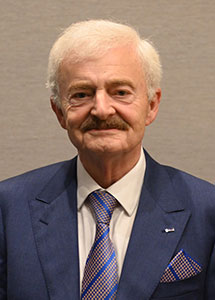
Hermann Stadtfeld
Gleason Corporation
Dr. Hermann Stadtfeld received in 1978 his B.S. and in 1982 his M.S. in Mechanical Engineering at the Technical University in Aachen, Germany. In 1987, he received his Ph.D. Since the beginning of 1994, he has worked for The Gleason Works in Rochester, New York, first as Director of R&D, and from 1996 as Vice President R&D. Today the position of Vice President – Bevel Gear Technology and R&D. Dr. Stadtfeld published more than 300 technical papers and 10 books on Bevel Gear Technology. He holds more than 70 international patents on gear design, gear process as well as tools and machines. In 2025, he received the prestigious Ernst Blickle Award from the SEW-Eurodrive Foundation. Dr. Stadtfeld holds a Professorship at the University of Ilmenau, Germany. He has previously presented 17 papers at the AGMA Fall Technical Meeting.

Zhiyuan Yu
Drive System Design
Dr. Zhiyuan Yu is a mechanical engineer at Drive System Design (DSD) with expertise in gear technology. He earned his Ph.D. in Mechanical Engineering from Tennessee Technological University in 2017. Before joining DSD, he worked at American Axle (AAM) as a Senior Gear Design Engineer. At DSD, Dr. Yu is responsible for powertrain development and optimization projects, balancing technical and commercial responsibilities. He is skilled in software, such as Transmission 3D, MASTA, Ansys, and the Gleason Software Package. Dr. Yu also supports the engineering team, contributing to innovative and sustainable powertrain solutions.
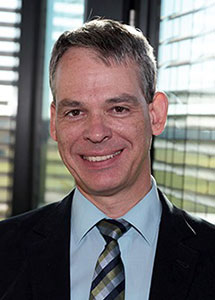
Joachim Thomas
ZG Hypoid GmbH
Dr. Joachim Thomas currently works mainly as an independent developer and consultant with his company ZG Hypoid GmbH. After writing his doctoral thesis at FZG (Technical University of Munich), he worked for many years in industry as a gear expert specializing in bevel gears. He worked for MAN Truck & Bus, Klingelnberg and Voith. He has been a member of the ISO standardization working group for bevel gears (ISO /TC60 /SC2 /WG13) since it was founded more than 25 years ago and has headed this group as convenor since 2015. Joachim Thomas was co-author and co-editor of the textbook “Bevel Gear” by J. Klingelnberg and has given lectures and training courses at numerous events worldwide.
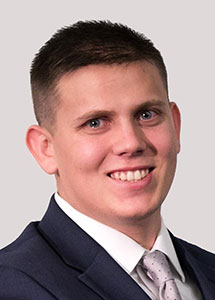
Caleb Gurd
Eaton Corporation
Caleb Gurd is a Lead Gear Engineer at Eaton’s Vehicle Group in Galesburg, MI, with over eight years of experience in the design and analysis of parallel axis and right-angle gearing systems. He holds a Bachelor’s degree in Physics from Kalamazoo College and a Master’s degree in Mechanical Engineering from Western Michigan University. Mr. Gurd bridges deep technical knowledge with real-world innovation, driving advancements in drivetrain technology for high-performance and commercial vehicle applications. He has been honored with the 2018 AGMA Foundation Scholarship and the 2024 AGMA Next Generation Award, recognizing his contributions to the advancement of the gear industry.
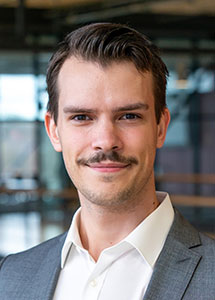
Simon Nohl
Laboratory for Machine Tools and Production Engineering (WZL) of RWTH Aachen University
Simon Nohl began working at the Laboratory for Machine Tools and Production Engineering (WZL) at RWTH Aachen University in 2017 as a student assistant during his mechanical engineering studies. He completed a project thesis on powder metallurgical gear simulation, a bachelor thesis on test rig design and simulation validation for automotive planetary gear trains, and a master thesis on modeling and verification of a tooth contact analysis for planetary gears—all at WZL. Since 2022, he is a research assistant at WZL, focusing on planetary gearboxes and condition monitoring. He also supervises the tooth contact analysis software “FE-Stirnradkette”, that is being developed at WZL since over 40 years.
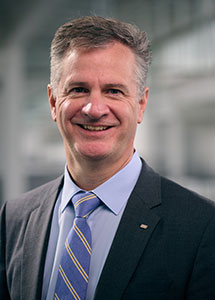
Karsten Stahl
Gear Research Center (FZG), Technical University of Munich (TUM)
Professor Karsten Stahl studied mechanical engineering at the Technical University of Munich (TUM) and served as a research associate at the Gear Research Centre (FZG) at TUM, receiving his Ph.D. degree (Dr.-Ing.). Then, he worked 10 years for BMW in different positions. He was head of the group “Prototyping, Gear Technology & Methods” in Dingolfing, department leader “Validation Driving Dynamics and Powertrain” at the MINI plant in Oxford, and Manager for “Predevelopment and Innovation Management” within BMW Driving Dynamics and Powertrain in Munich. Since 2011, Prof. Stahl has been head of the Institute for Machine Elements and director of the Gear Research Center (FZG) at TUM, and since 2024 has been head of the department of Mechanical Engineering at the School of Engineering and Design of TUM. The focus of his research is experimental and analytical investigations of endurance, tribology, NVH, materials, and condition monitoring on gears, transmission components, and drive systems, targeting to develop methods and tools for the reliable determination of fatigue life, efficiency, and vibration characteristics. Prof. Stahl is the author of several hundred scientific publications, a member of many scientific boards and associations, convenor of DIN and ISO working groups, editor of scientific journals, and chairman of different scientific conferences, including president of the VDI International Conference on Gears.
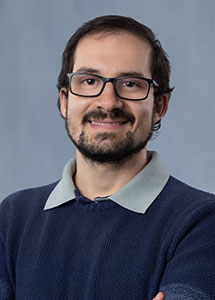
Diego Montoya
Ikergune, INZU Group
Diego Montoya-Zapata is an R&D Additive Manufacturing Engineer at Etxetar, INZU Group. He holds a PhD in Computational Geometry and a BSc in Mathematical Engineering from EAFIT University, Colombia. He has 7 years of experience in computational geometry and computational mechanics for Additive Manufacturing. His current research focuses on the evaluation of path-planning strategies for Laser-Directed Energy Deposition (LDED) in industrial applications, such as gear repair by LDED.

Peter Schmidt
United Protective Technologies, LLC, UNCC PORTAL
Dr. Peter Schmidt, P.E., is the Lead Research Engineer at United Protective Technologies, LLC, based at the UNCC PORTAL office. He holds Bachelor’s, Master’s, and Doctoral degrees in Mechanical Engineering. With over 35 years of professional experience, Dr. Schmidt has worked in various sectors, including the Department of Defense, commercial manufacturing, consulting, and academia. He has held academic appointments at two universities, achieving the rank of full professor before joining his current firm. Additionally, he is a licensed professional engineer in two states.

Borut Černe
RD Motion, d.o.o.
Dr. Borut Černe is a cofounder and Co-CEO at RD Motion. Having previously worked at the University of Ljubljana, he has more than 11 years of research experience in solid mechanics, polymers testing, gear design and testing, engineering design and power transmissions. His research has mostly been focused on numerical modeling of engineering polymers with focus on polymer power transmissions, along with testing and development of novel experimental methodologies for this type of applications. As part of his work at RD Motion, he is mostly involved in R&D operations including test rig development, testing execution and data analysis.
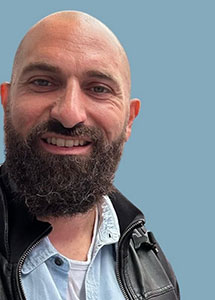
Claudio Autore
Ferrari S.p.A.
Claudio Autore earned his master’s degree in mechanical engineering in 2013, and a Ph.D. in 2016 at University of Rome Tor Vergata. He joined Ferrari GT in 2014 in the ICE Simulation Department. In 2017 he moved to Ferrari F1 as Team Leader ICE Dynamic Simulation Department. Since 2020, he has been the ICE F1 Geartrain Technical Leader.
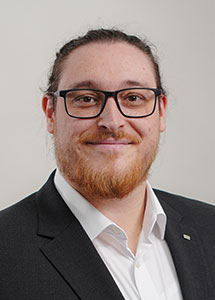
Martin Weber
Gear Research Center (FZG), Technical University of Munich (TUM)
Martin Weber is currently a doctoral researcher at the Chair of Machine Elements, Gear Research Center (FZG) at the Technical University of Munich (TUM). His research focuses on plastic crossed helical gears and flank fracture phenomena in bevel gear transmissions. He holds a Bachelor’s degree in Engineering Sciences and a Master’s degree in Mechanical Engineering, both from TUM. Since 2021, he has been conducting research at FZG on the performance and durability of polymer and metal gear systems. He has presented his work at the VDI conference High-Performance Polymer Gears in 2024 and is scheduled to present at the International Conference on Plastic Gears in September 2025.

Carlos Wink
Eaton Corporation
Carlos Wink is a Chief Engineer with Eaton Mobility Group in Galesburg, Michigan. He has over 30 years of experience in the gear industry working on power transfer systems for automotive, commercial vehicles, aerospace, and electrical equipment applications. More recently his work has been primarily focused on gear drive units of electric mobility. Wink holds a Ph.D. and a master’s degree in mechanical engineering, both from University of Campinas, and holds a Bachelor of Science in Mechanical Engineering from University of Saint Cecilia in Brazil. He has published 32 technical papers and holds five patents.
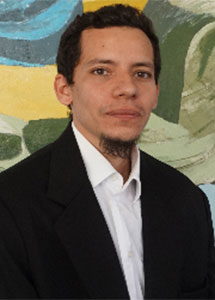
Bruno Henrique Lima
Aeronautics Institute of Technology
Bruno is a metallurgical engineer with expertise in residual stress analysis, fatigue behavior, and gear manufacturing processes. He is currently a research assistant and a Ph.D candidate at the Aeronautics Institute of Technology in Brazil, focusing on the influence of residual stress heterogeneity on the relaxation behavior of gears. His research integrates advanced techniques such as X-ray diffraction mapping and fatigue testing to investigate the evolution of residual stresses under cyclic loading.
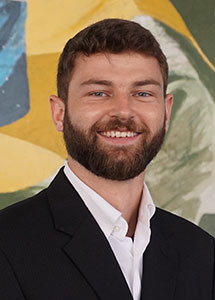
Matheus Fernandes Vieira (Author)
Aeronautics Institute of Technology
Matheus Vieira is a mechanical engineer and research assistant at the Competence Center in Manufacturing (CCM) of the Aeronautics Institute of Technology (ITA). Member of the Gear Innovation Group (GIE), Matheus is currently working on a master’s degree. His studies focus on applying topology optimization in gears to improve Noise, Vibration and Harshness (NVH) behavior.
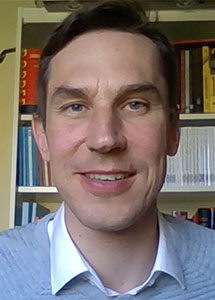
Michael Otto
Gear Research Center (FZG), Technical University of Munich (TUM)
Dr.-Ing. Michael Otto is currently research group leader ‘calculation and verification of transmission systems’ at the Gear Research Center (FZG), Prof. K. Stahl, TU München and ViceDean IT in the school ED at TUM. He joined FZG in 2000 as a research assistant and gained his position in 2006. He holds a PhD in mechanical engineering, topic of his research activities are gear load distribution and tooth root carrying capacity. Current research activities include research on gear geometry, tooth contact analysis, gearbox related NVH and deformation and stress analysis of supporting shafts and bearings in the gearbox. He drives the development of various scientific programs at FZG.

Tom Reavie
Newcastle University
Tom Reavie is an engineer at Design Unit, Newcastle University, which specializes in design, analysis, and testing of mechanical power transmissions. He joined in 2017 after achieving his Master’s in Mechanical Engineering. After first working on gear design and analysis, he has since moved into the UK National Gear Metrology Laboratory, where he leads gear research. The current focus of research is the characterization of gear flank surfaces using tactile probing, which is also the topic of his PhD due to be completed in 2026. He lectures on the Newcastle University Design for Mechanical Power Transmissions undergraduate course and is a tutor for the Gear Geometry course delivered to members of the British Gear Association.
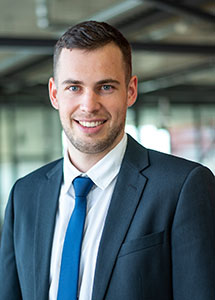
Steffen Hendricks
Manufacturing Technology Institute (MTI) of RWTH Aachen University
Steffen Hendricks is currently employed as a research assistant at the Manufacturing Technology Institute MTI at RWTH Aachen University since the beginning of 2021. There he works in the gear department in the manufacturing group. His research focuses on tool condition monitoring in gear hobbing. Before starting his PhD, he completed a Bachelor degree in mechanical engineering and a Master degree in production engineering. During his studies, he deepened his knowledge of gear manufacturing by working as a research assistant at MTI of RWTH Aachen University.

Tom Abraham
Rochester Institute of Technology
Tom Abraham is a Ph.D. student at the Rochester Institute of Technology studying under the supervision of Dr. Alfonso Fuentes as a recipient of the Gleason Doctoral Fellowship at the Rochester Institute of Technology. He has been performing research on gear technology since 2018. He has also worked at the Gleason Works since 2019. There, he has worked in the Research and Development Department, under the supervision of Dr. Hermann Stadtfeld. His topics of interest include simulation of gear manufacturing, computational gear design, and gear inspection. He has been recognized for these interests in the past by a scholarship by the AGMA Foundation.
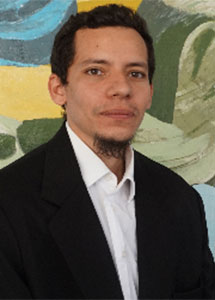
Bruno Henrique Lima
Aeronautics Institute of Technology
Bruno is a metallurgical engineer with expertise in residual stress analysis, fatigue behavior, and gear manufacturing processes. He is currently a research assistant and a Ph.D candidate at the Aeronautics Institute of Technology in Brazil, focusing on the influence of residual stress heterogeneity on the relaxation behavior of gears. His research integrates advanced techniques such as X-ray diffraction mapping and fatigue testing to investigate the evolution of residual stresses under cyclic loading.
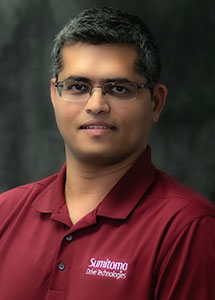
Sandeep Thube
Sumitomo Drive Technologies
Sandeep V. Thube is working as a Research & Development Engineering Manager at Sumitomo Machinery Corp. of America, in Chesapeake, VA. Sumitomo is a leading manufacturer of gear reducers and control products in a wide variety of applications. Sandeep has M.S. degree in Mechanical Engineering, specializing in product design and simulation. He has 15 years of work experience in the gear industry. He has previously authored ASME and AGMA conference papers.
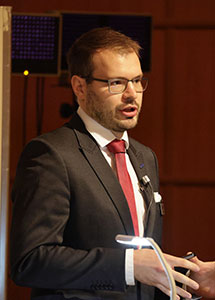
Andreas Hilligardt
Reishauer AG
Andreas Hiligardt studied mechanical engineering with a focus on production at the Karlsruhe Institute of Technology (KIT). After graduating, he co-founded a start-up for high-performance electric drives before returning to the university and researching gear skiving as a research assistant for over 4 years. He is now team leader for the technology development of gear skiving at Reishauer AG.
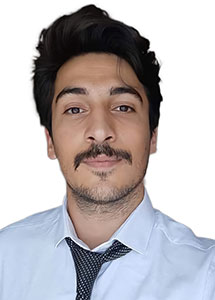
Bahadir Karba
Bursa Uludağ University
Bahadir Karba earned a bachelor’s and master’s degree in the gear engineering field at Gaziantep University. His experiences on powertrain and transmission systems at an academic level stimulated his wish to continue work in the field at a professional level. His M.Sc. Research Project was “Developing A Software for Proper Assembly of Planetary Gearbox Components with Low Backlash.” His M.Sc. study was finalized via the international patent “A method for proper mounting grouping of planetary gearbox components with a low backlash value target.” He started his career as Reducer Mechanical Design Leader at VALEO Company. Currently, he is pursuing a PhD at Uludağ University with “Tribological investigation of IPE on Cryogenic Conditions for Gear Bearing Drive.”
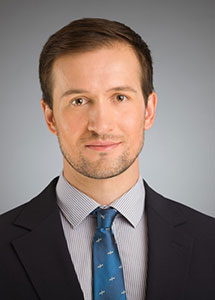
Damijan Zorko
RD Motion, d.o.o.
Dr. Damijan Zorko is a co-founder and CEO of RD Motion. He studied Mechanical Engineering at University of Ljubljana, and received his Ph.D. in 2019. Results of his research work are published in over 70 scientific and technical papers. He is also holder of five patents. Having over 15 years of experience on gear transmissions, he was deeply involved in developing RD Motion’s modern test benches and testing methods for experimental research on gears. Working at the forefront of plastic gears technology he has state-of-the-art know how and insights from several industry sectors, e.g. automotive, house appliances, medical, robotics.

Philipp Kauffmann
Johnson Electric Aachen
Dr.-Ing. Philipp Kauffmann is Director in Research and Innovation at Johnson Electric, where he leads projects in powder metallurgy, hydrogen energy and sustainable manufacturing. With a doctorate in Mechanical Engineering from RWTH Aachen, his career spans over 15 years across R&D, business development, and gear technology. He previously held key roles at Bonfiglioli and WZL RWTH Aachen and has managed innovation in electric vehicle powertrains and advanced materials. Certified in Hydrogen Technology and AI Business Management, he brings a strong interdisciplinary perspective. Dr. Kauffmann actively collaborates with research institutions and industry partners to drive forward-looking solutions in manufacturing and mobility.
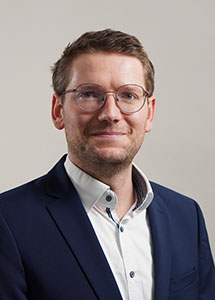
Lorenz Constien
Gear Research Center (FZG), Technical University of Munich (TUM)
Lorenz Constien is a research assistant at the Gear Research Center (FZG) at the Technical University of Munich since 2021. He has a bachelor’s and a master’s degree, both in Mechanical Engineering. He specializes in the field of bevel and hypoid gears and is currently the team leader for bevel gears at the Gear Research Center. During his studies, he focuses, for example, on the load-carrying capacity of bevel and hypoid gears and the operational behavior of high-reduction hypoid gears. He is a member of the ISO/TC 60/SC 2/ Working Group 13 “Bevel Gears”, and this is his first presentation at the AGMA Fall Technical Meeting.
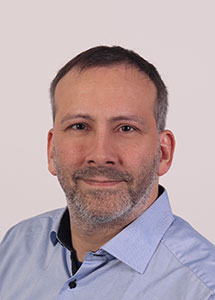
Dennis Tazir
FVA GmbH
Dennis Tazir is currently a software developer and product manager at FVA GmbH. In this role, he supports customers in using the FVA-Workbench for gearbox design and analysis, provides engineering services assistance with customer projects, and contributes to software development with a focus on cylindrical gears. He began his career as a simulation engineer for structural durability and reliability at Fraunhofer Institute LBF, and later worked as a gear designer and analyst for manual transmissions at General Motors Power Train Europe. He holds a degree as Dipl.-Ing. in mechanical engineering from the Technical University of Darmstadt.
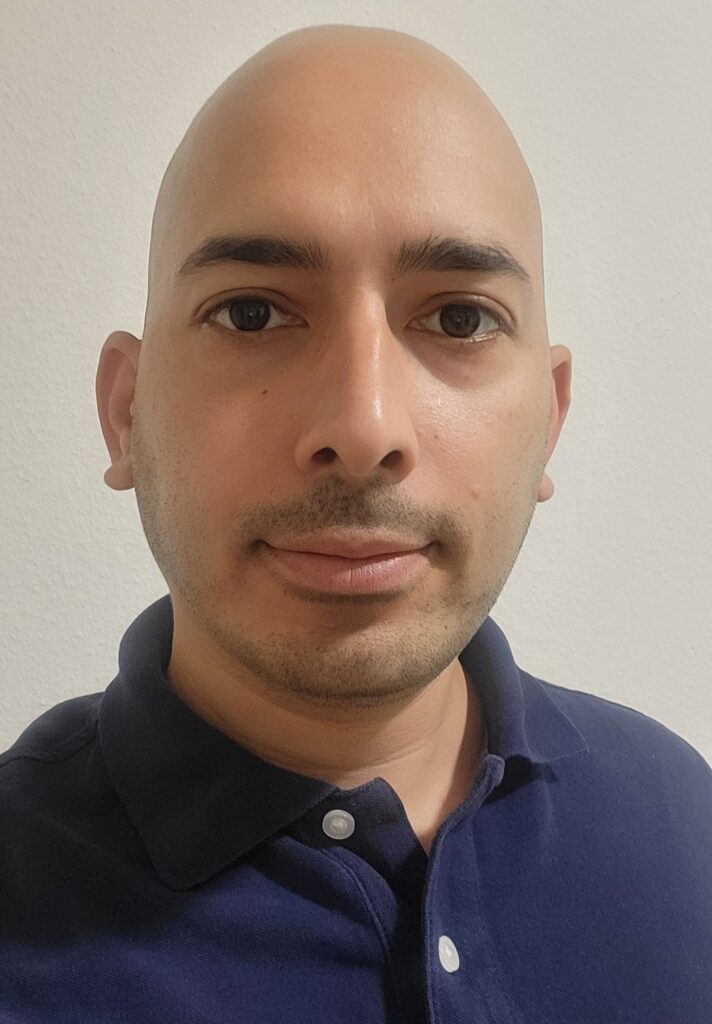
Adam Ata
KISSsoft AG
Adam Ata is currently a software developer at KISSsoft AG specializing in the development of the loaded tooth contact analysis module and related gear calculations for the CAE software KISSsoft. Prior to this role, he worked as a mechanical engineer designing gearboxes for a wide number of industries and applications allowing him to study NVH performance. He earned his Bachelor of Science from Purdue University in Aerospace Engineering.
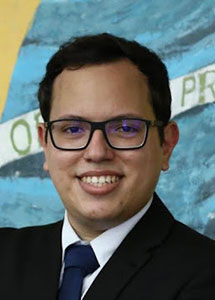
Caio Felipe Siqueira Gomes
Aeronautics Institute of Technology
Caio Gomes is currently a Research Assistant ay the Aeronautics Institute of Technology (ITA) in Brazil. He integrates the Gear Innovation Group, a group dedicated to research into gear technologies and power transmission systems, being involved in many research projects with the gear manufacturing chain industry. He has Bachelor and Master Degrees, both in Mechanical Engineering. His research fields include the investigation of the surface integrity state induced by manufacturing processes and how it can alter the operational behavior of mechanical components, with a focus on gears. He is a PhD Student, also at ITA, where he is developing a thesis considering the influence of residual stress state heterogeneities on gear fatigue lifetime.
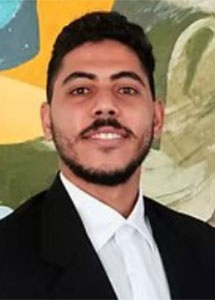
Gilberto Martins
Aeronautics Institute of Technology
Gilberto Martins has a degree in Metallurgical Engineering from Minas Gerais State University (2020). He is currently a research assistant at ITA’s Competence Center in Manufacturing and also a member of the Gear Innovation Group, where he works with gear manufacturing. He has experience in surface finishing, emphasising superfinishing processes and the influence of the manufacturing chain on surface integrity.

Luca Bonaiti
Politecnico di Milano
Luca Bonaiti is currently serving as an assistant professor (RTDA) at the Mechanical Engineering department of Politecnico di Milano Italy. He is actively engaged in research within the field of machine elements, with a specialized focus on gear systems and power transmission. His primary research activities revolve around the design, analysis, and experimental testing of gearboxes covering aspects such as fatigue strength and NVH characterization. His main research field is endurance testing and fatigue analysis of gears, particularly on the tooth root fatigue fracture phenomena. He has a Bachelor in production engineering and master degree in mechanical engineering. He earned his European Ph.D. cum Laude in April 2023 with a dissertation titled “Advances in Gear Design and Testing.”
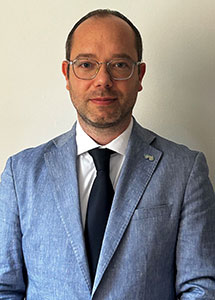
Sergio Sartori
Leonardo Helicopters
Sergio Sartori is the Head of Analysis & Innovation in the Transmission System department at Leonardo Helicopters. With over two decades of experience in the aviation and aerospace sector, Sergio has managed structural and gear analysis teams, integrating research projects focused on technology, innovation, and concept development. Formerly Chief Project Manager for the AW169 Drive System, Sergio oversaw system improvements, cost-reduction initiatives, and certification activities, ensuring continuous product serviceability. He has collaborated with European universities, leading numerous research projects. He is also active in technical training and has contributed significantly to the company’s intellectual property development through publications, patents, and innovation awards. Currently, Sergio also serves as Vice President of Innovation & Technology at FEDERTEC.
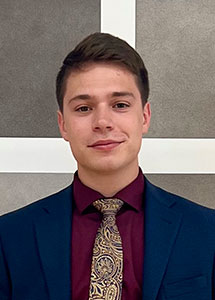
Noah Kantor
Worcester Polytechnic Institute
Noah is a first year PhD candidate studying Materials Science and Engineering. He graduated from WPI in 2023 with his BS degree in Chemical Engineering and in 2024 with an MS degree in Materials Science and Engineering. Noah has worked in various R&D roles as an intern in material science fields such as glass science and the industrial heat treatment of steels. He has a specific interest in the ferrous metallurgy field, with his research focusing on topics relating to surface engineering and quenching.
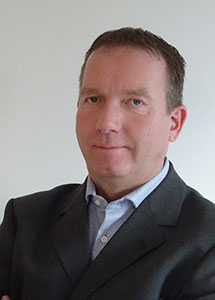
Volker Heuer
ALD Vacuum Technologies GmbH
Dr.-Ing. Volker Heuer studied metallurgy and material science at RWTH Aachen Technical University in Germany. Then he worked as a scientist for TU Freiberg Technical University in the department of Mechanical Engineering and for Cambridge University (UK) in the department of Materials Science and Metallurgy. In 1999, he completed his PhD at TU Freiberg. Starting in 1999, he worked as research engineer at ALD-Vacuum Technologies GmbH in Hanau, Germany. He was involved in the development of Low Pressure Carburizing, Plasma-Carburizing and High Pressure Gas Quenching. Since 2007, he has been the VP R&D for ALD Vacuum Technologies GmbH. In addition, since 2020, he has been acting CTO of ALD’s heat treat service division.
Sponsors

Cancellation and Payment Policy
Please view our cancellation policy here. Please view our code of conduct here.




